Abstract
Analogues of d-glucose modified at C-3, and in some cases at a second position, were prepared and tested for active accumulation by everted segments of hamster intestine. Their relative affinity for the sugar carrier was measured by tissue/medium ratio, Michaelis–Menten kinetics and competitive inhibition of d-galactose or methyl α-d-glucoside transport. d-Glucose and its 3-deoxy-3-fluoro, 3-chloro-3-deoxy and to a smaller extent its 3-bromo-3-deoxy derivatives, bound and were transported more strongly than 3-deoxy-d-glucose and other sugars not containing an electronegative atom in the gluco configuration at C-3. 3-Deoxy-d-galactose, 3,6-dideoxy-d-glucose and d-gulose, which have two alterations from the d-glucose structure, were not, or only very weakly, transported. The results are interpreted as indicating the presence of a hydrogen bond from the carrier to the hydroxyl group at C-3 of d-glucose. Spatial requirements are also discussed. New syntheses are reported for 3-chloro-3-deoxy- and 3-bromo-3-deoxy-d-glucose and 3,6-dideoxy-d-glucose.
Full text
PDF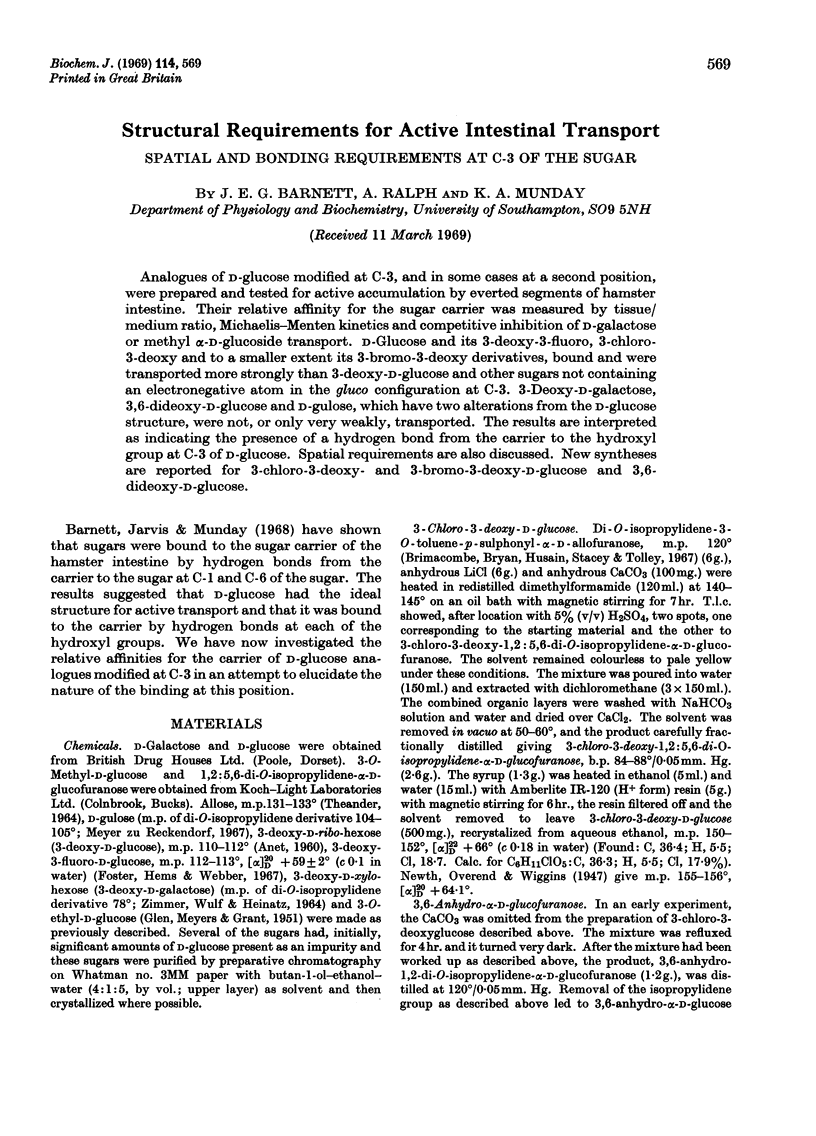
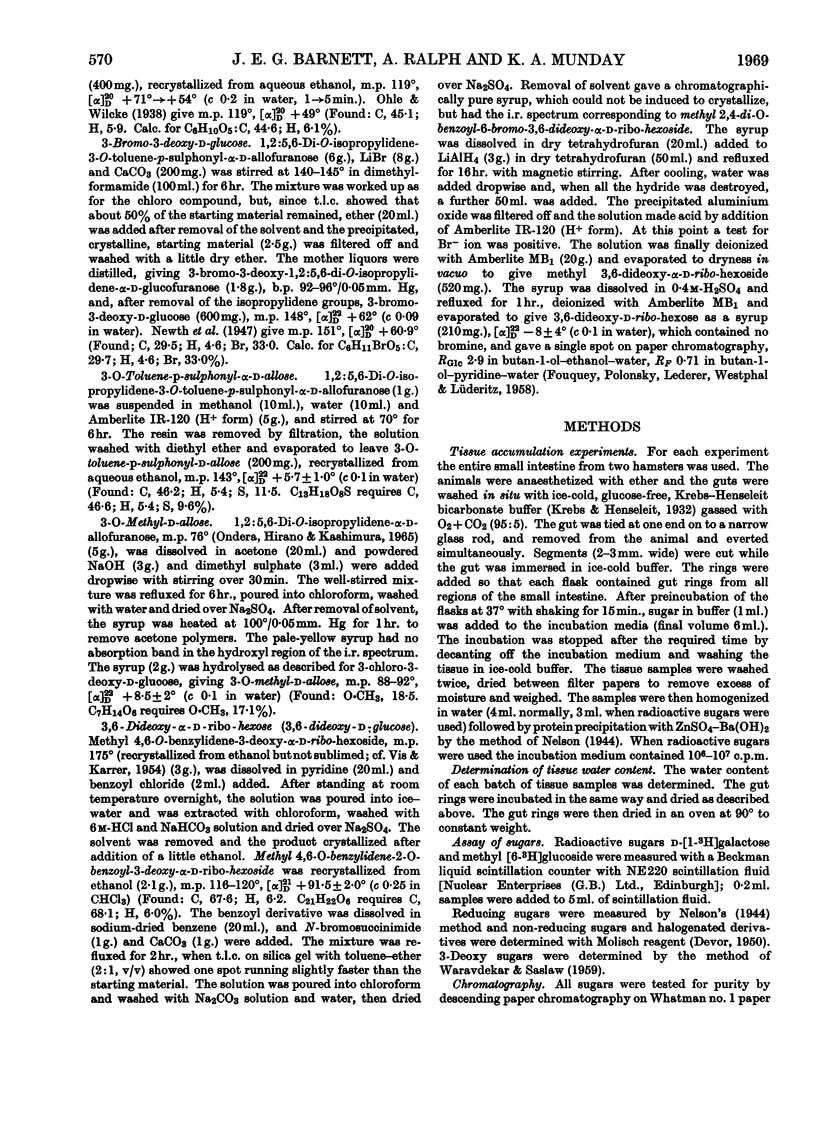
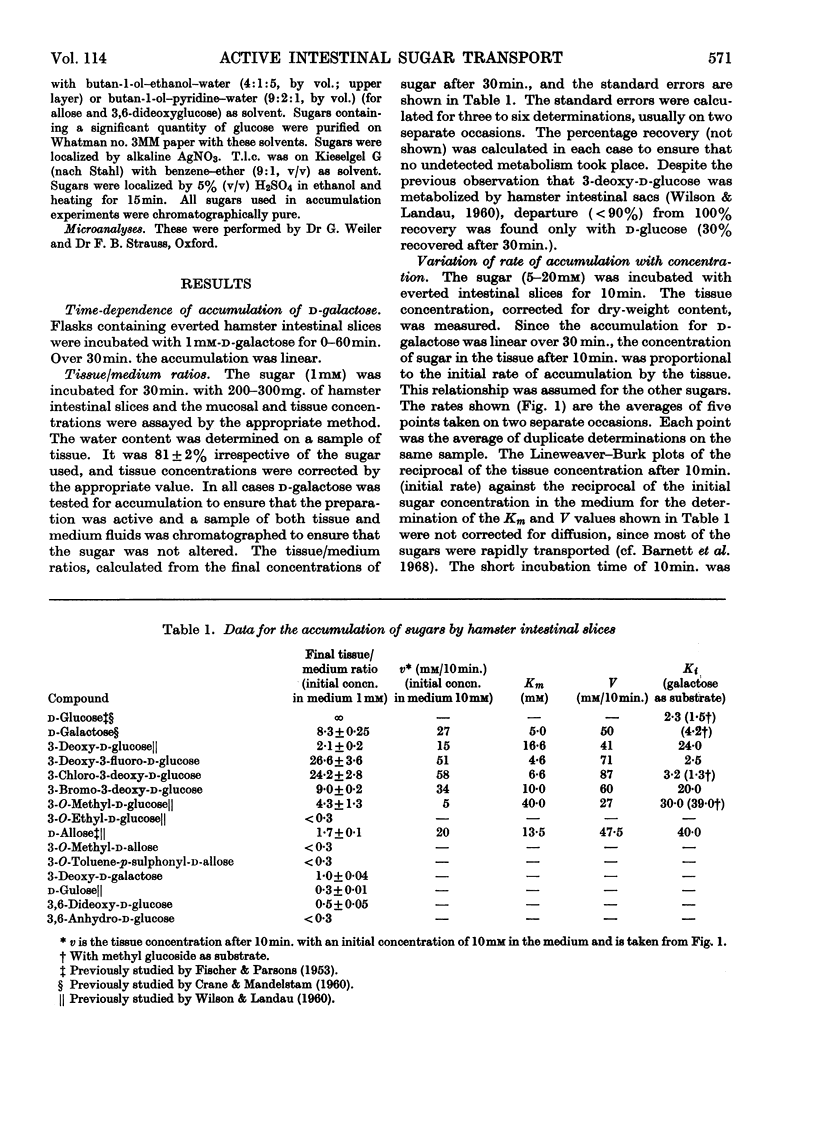
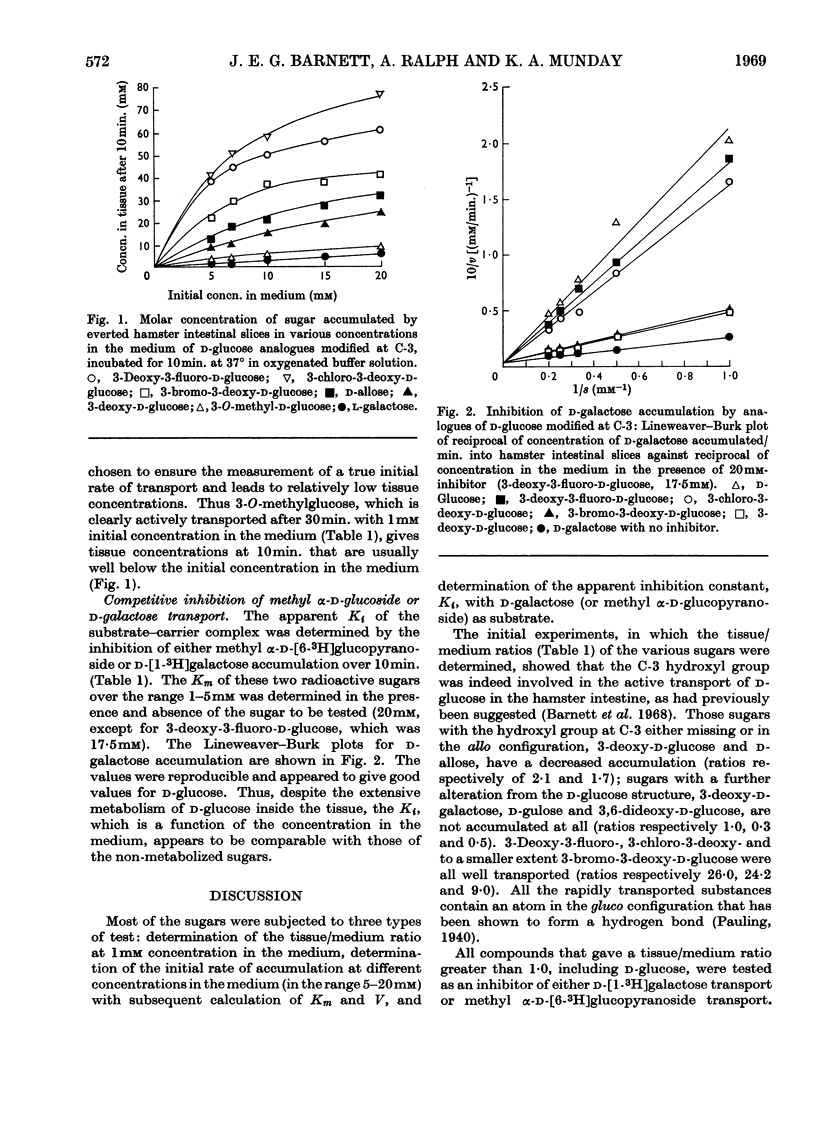
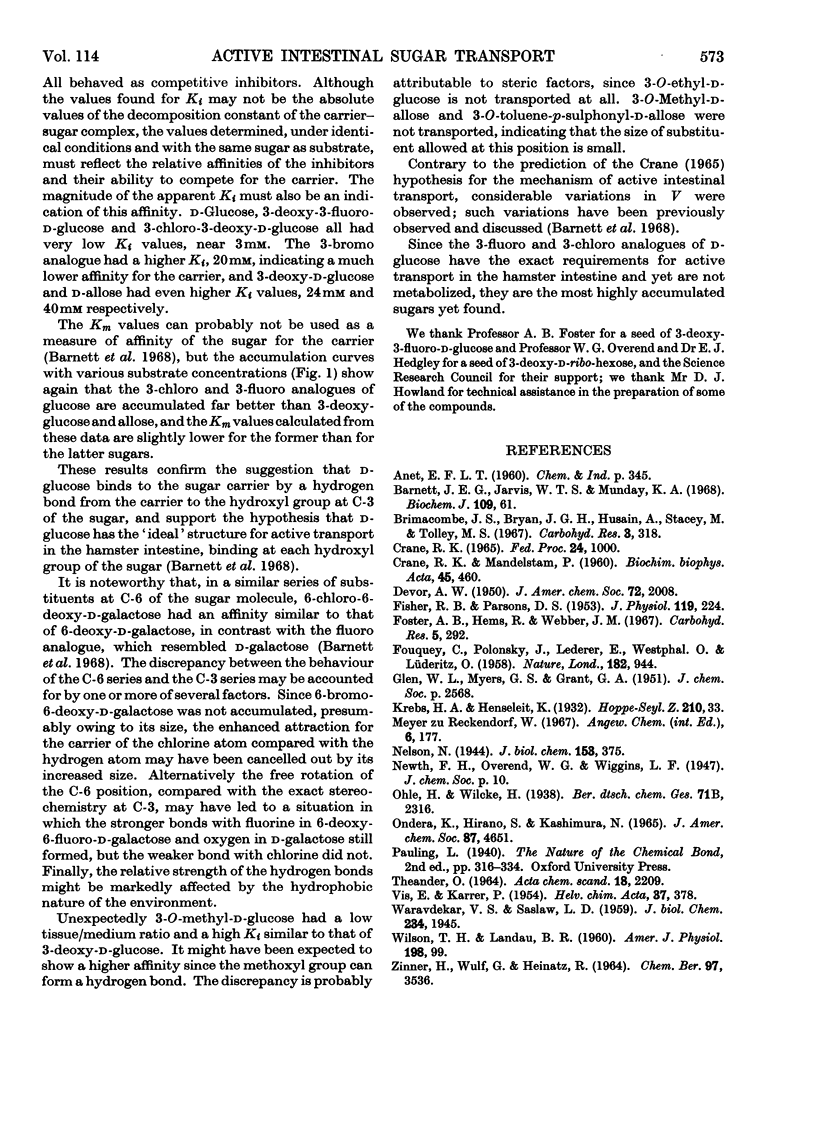
Selected References
These references are in PubMed. This may not be the complete list of references from this article.
- Barnett J. E., Jarvis W. T., Munday K. A. Structural requirements for active intestinal sugar transport. The involvement of hydrogen bonds at C-1 and C-6 of the sugar. Biochem J. 1968 Aug;109(1):61–67. doi: 10.1042/bj1090061. [DOI] [PMC free article] [PubMed] [Google Scholar]
- CRANE R. K., MANDELSTAM P. The active transport of sugars by various preparations of hamster intestine. Biochim Biophys Acta. 1960 Dec 18;45:460–476. doi: 10.1016/0006-3002(60)91482-7. [DOI] [PubMed] [Google Scholar]
- Crane R. K. Na+ -dependent transport in the intestine and other animal tissues. Fed Proc. 1965 Sep-Oct;24(5):1000–1006. [PubMed] [Google Scholar]
- FISHER R. B., PARSONS D. S. Galactose absorption from the surviving small intestine of the rat. J Physiol. 1953 Feb 27;119(2-3):224–232. doi: 10.1113/jphysiol.1953.sp004840. [DOI] [PMC free article] [PubMed] [Google Scholar]
- Meyer zu Reckendorf W. Synthesis of D-gulose from D-glucose. Angew Chem Int Ed Engl. 1967 Feb;6(2):177–177. doi: 10.1002/anie.196701771. [DOI] [PubMed] [Google Scholar]
- WARAVDEKAR V. S., SASLAW L. D. A sensitive colorimetric method for the estimation of 2-deoxy sugars with the use of the malonaldehyde-thiobarbituric acid reaction. J Biol Chem. 1959 Aug;234(8):1945–1950. [PubMed] [Google Scholar]
- WILSON T. H., LANDAU B. R. Specificity of sugar transport by the intestine of the hamster. Am J Physiol. 1960 Jan;198:99–102. doi: 10.1152/ajplegacy.1960.198.1.99. [DOI] [PubMed] [Google Scholar]


